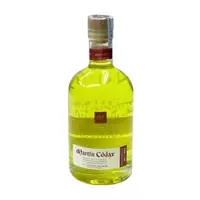Oruho

Orujo is the name for an alcoholic beverage that is traditional in areas of northwestern Spain. It acts as a product of distillation of fermented residues of grape raw materials, which is pressed during the wine making process. The percentage of alcohol in oruho can vary between 30-60%.
As you know, in the Middle Ages Oruho was done in Cantabrian Catholic monasteries (especially in the region of Lieban). By the way, this area remains one of the most famous places for the manufacture of this drink, while it is still partially prepared in monasteries.
The raw materials for the production of oruho are the remains of grapes of various varieties (not only peels and bones, but also stalks), which are formed after squeezing. At the end of fermentation in open vats, these squeezes are embedded in metal distillation cubes made of copper, and the process of single distillation of wine material itself usually lasts more than six hours. Thus, technologically and in composition, oruho has much in common with such strong grape alcoholic beverages of other countries as chacha, grappa, pisco and the like.
As a result of distillation, the resulting drink is colorless, and in industrial production it is completely transparent (it can be slightly cloudy in artisanal production). However, some oruho varieties can be aged for several years (at least
2) in oak barrels, due to which they acquire an amber or golden color. In addition, the infusion of oruho on honey, aromatic herbs, spices or coffee beans is quite widespread - then the finished drink becomes a wide variety of shades of yellow, green or brown.
Traditionally, the alcohol content in Spanish Orujo is 35-50, sometimes 60%. But in recent decades, lighter varieties - thirty-degree - have begun to become widespread and popular.
As the main alcoholic drink, oruho is consumed in its pure form - at a meal or by itself, as well as as a digestif. The oruho-based variety of tinctures are mainly served as aperitif. Oruho can be consumed both cooled and at room temperature. Traditionally, this drink is served in stacks, but from the middle of the last century in bars and restaurants it began to be often poured into glasses taken when serving Italian grappa - with a slightly expanding top and a spherical bottom.
It is noteworthy that in Galicia there is an old tradition according to which the low-alcohol drink keimada (queimada) is made from oruho. To do this, the chopped lemon zest, ground coffee and sugar are put in a deep clay bowl, this oruho is poured, and then the resulting mixture is set on fire. Usually, the fire takes on a bright blue color, and after its decay, the drink has a significantly lower strength than oruho itself. They drink it hot, usually from clay cups or glasses.
Oruha 225 kKal
Energy value of oruch (Ratio of proteins, fats, carbohydrates - ju):
Proteins: 0 g (~ 0 kCal)
Fats: 0 g (~ 0 kCal)
Carbohydrates: 0.5 g (~ 2 kCal)
Energy ratio (bj | y): 0% | 0% | 1%
 Español
Español Français
Français Português
Português Русский
Русский 简体中文
简体中文 繁體中文
繁體中文 日本語
日本語 한국어
한국어 العربية
العربية Türkçe
Türkçe Қазақ
Қазақ Deutsch
Deutsch Italiano
Italiano Українська
Українська
